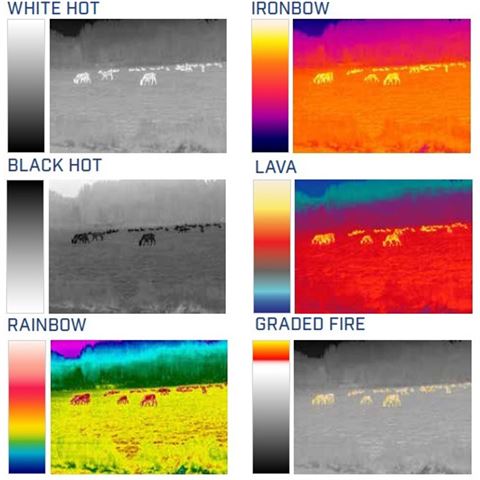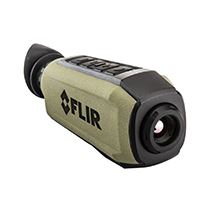- Sale
- 360 Degree Photography
- Battery and Battery Grip
- Backgrounds Even Color
- Backgrounds with Print
- Background Systems
- Cameras
- Camera Accessories
- Camouflage
- Continuous and Videolight
- Filters, Converters and Rings
- Photo frames
- Clamps and Adapters
- Cases and Bags
- Bulbs
- LED Lighting
- Magnifying Glasses
- Macro Photography
- Microphones
- Microscopes
- Night Vision Devices
- Shooting Tables and Tents
- Outdoor and Survival
- ID Photo Systems
- Flash Umbrellas
- Printers
- Reflectors
- Reflectors and Snoots
- Riflescopes
- Rigs Sliders and Stabilizers
- Camouflage Hides
- Smartphone Accessories
- Soft Boxes and Beauty Dishes
- Speedlite Camera flashes
- Spotting scopes
- Tripods and Ballheads
- Strobist
- Studio Accessories
- Studio Flashes and Kits
- Tecco Ilford Print Media
- Telescopes
- Trigger Sets
- Binoculars
- Thermal Imaging
Thermal Imaging Cameras
Thermal imaging cameras are used for long-range observations, in difficult weather conditions and in complete darkness. These thermal viewers do not need any residual light to produce a crystal-clear image. The image is formed on the basis of heat detection. With these high-tech cameras it is possible to see even through light fog, smoke and almost all other (bad) weather conditions! Thermal imaging cameras not only produce a clear image in total darkness, they are also very useful in daylight. Thermal contrast is extremely difficult to mask. Something or someone hiding in the woods becomes fully visible immediately. This makes thermal viewers ideal for a wide range of applications, such as nature observation, hunting, law enforcement, security and checking buildings for heat loss. Thermal imaging cameras are available in monocular (single-eye) and binocular (two-eye) versions. View all our thermal imaging cameras here.
Personal use and hunting
Thermal imaging cameras are very suitable for personal use. For example, you can use thermal imaging cameras for night-time nature observation or for monitoring your own terrain. Thermal viewers are also used to detect heat leaks in buildings, for example. In addition, it is an essential accessory for hunters to detect animals based on their body heat, or to trace shot game through the heat trails left behind. The camera creates images based on heat instead of light, making it easy to follow heat trails of animals.
Security and law enforcement
A thermal imaging camera is also indispensable for professional bodies such as the police, the military and other forms of security. In the case of security and law enforcement missions, it is essential to be able to take a decision immediately if necessary. By using thermal imaging cameras, agents and security guards have a tactical advantage, which enables them to react quickly to situations. For example, people can be detected who are camouflaging or hiding in the woods, or cars can be traced by means of heat traces left behind by the tyres. People who have been thrown overboard can be seen at sea using their body heat and unusual sources of heat can easily be distinguished. Thermal imaging cameras are therefore used by agents and security guards worldwide. These are generally thermal imaging cameras that are displayed under the 'Pro' label on our website.
Thermal imaging cameras vs. night vision cameras
Night vision devices, also known as residual light amplifiers, amplify small amounts of visible light thousands of times, so that objects can be observed in the night. Residual light amplifiers logically need a certain amount of light; even the light from the stars can provide this on a clear night. Since residual light amplifiers need at least a certain minimum amount of residual light, heavy clouds, for example, can have a significant impact on image quality. In the same way, an excess of residual light can overwhelm the system and also have a negative impact on image quality. The advantage over night vision equipment is that you will never be affected by the absence or presence of light. The displayed image is formed on the basis of detected heat differences.
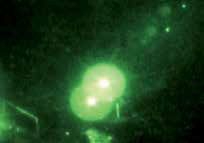 |
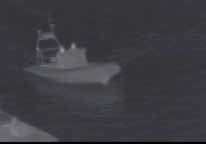 |
| Night Vision: The image is affected while you are directly looking into the ships lighting. | Thermal Imaging: The image is not affected while looking directly looking into the ships lighting |
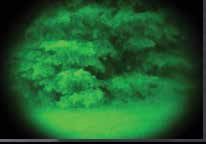 |
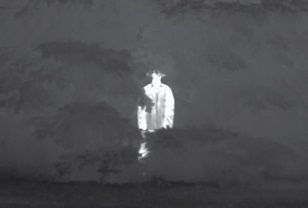 |
| Night Vision: The suspect is hiding behind these bushes, but not cannot be spotted | Thermal imaging: Even though the suspect is hiding behind the bushes, his heat signature is easily found by the thermal imaging camera. |
How does it work?
Thermal imaging cameras detect heat in a certain environment and translate it into an image. A number of cameras measure the actual temperature; some only detect heat differences. Compare it with someone walking and being overtaken by a person running. The differences in speed are clear, but it is not possible to determine with how many km/h these people are moving. The detector has a certain resolution, in which each pixel collects the heat and translates this into a colour. These pixels are transformed into a certain image that the camera displays, or the image resolution. The higher the resolution, the more detail the user sees. The degree of refreshment of the image (frame rate in hertz) determines how smooth the images are, just like a television works. The best thermal imaging cameras have a 60hz frame rate, which allows them to display images in real time. Using the built-in digital zoom, you can bring the displayed image closer.
Colour palettes
The way in which detected heat is displayed in the display is determined by means of colour palettes. FLIR/Armasight cameras include InstAlert, White- and Black Hot. The hottest object is displayed in red, white or black. This application is ideal for easily detecting or following a human, animal or object in an environment. You can use Ironbow if you want to detect temperature differences in a certain environment, while still seeing a lot of detail. Rainbow can be used when you want to distinguish between small temperature differences in an environment, but where the detail of the environment is less important. Finally, with Graded Fire, the 10% hottest objects are displayed in bright yellow/orange, while the rest is projected in a gray scale. Below is a representation of the most common colour palettes.
